Understanding the Hoa people in Vietnam
Vietnam is not only known for its stunning landscapes but also for its rich cultural diversity. Among the many ethnic communities, the Hoa people (ethnic Chinese) have played a special role. Though they make up a small portion of the population, their influence can be clearly seen in Vietnamese architecture, cuisine, festivals, and beliefs, especially in places like Hoi An. For travelers who love cultural exploration, discovering the Hoa heritage in Hoi An is a journey full of color and meaning.
Hoa people in Vietnam
Among the more than 50 ethnic groups that make up the diverse cultural landscape of Vietnam, the Hoa people are a minority group, comprising about 1% of the country’s population. While their numbers may be small, the Hoa people have had a significant impact on many aspects of life in Vietnam, including commerce, architecture, cuisine, and religious practices. They brought with them distinctive cultural values from their homeland, which have since blended with Vietnamese traditions, creating a unique fusion of both cultures.
The Hoa people, originating from China, first arrived in Vietnam several centuries ago. Their migration can be traced back to various waves, primarily during the Ming and Qing dynasties. Over time, they established vibrant communities in coastal cities and trade hubs, with one of the most notable being Hoi An, a once-thriving port town in central Vietnam.
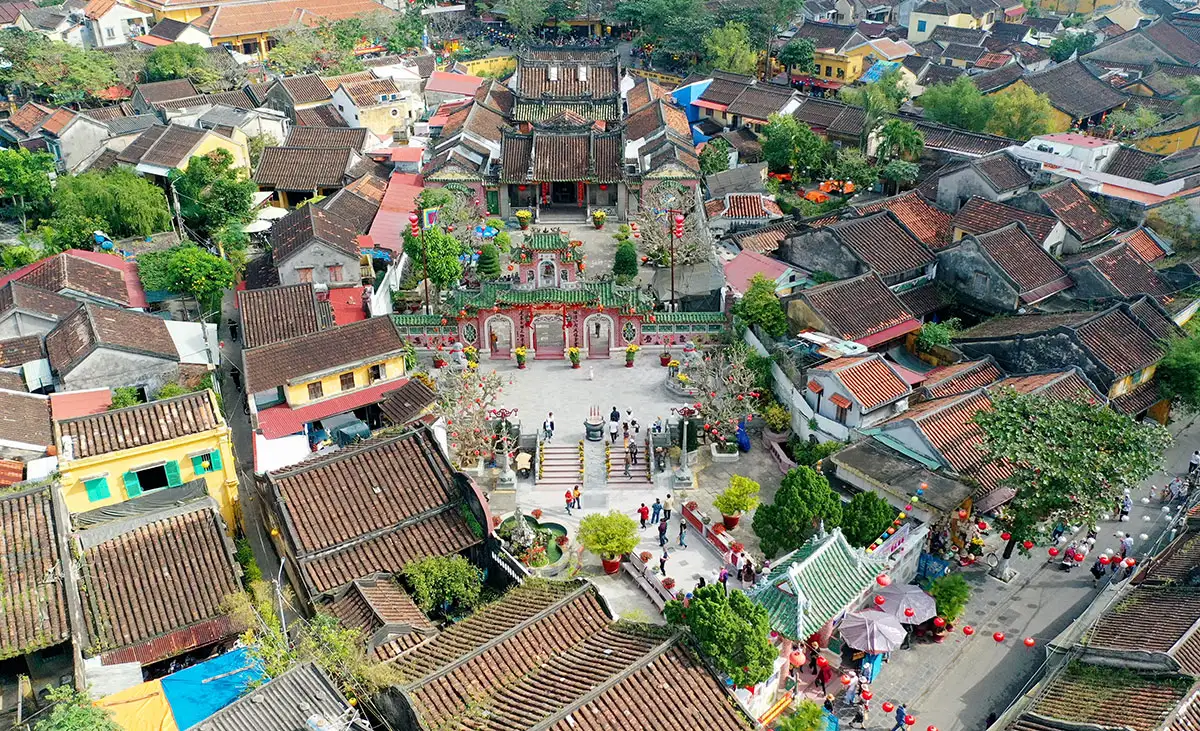
The Hoa people live in many regions across Vietnam, but their most prominent presence can be found in areas that were once thriving trade centers, such as Chợ Lớn (Ho Chi Minh City), Mỹ Tho (Tien Giang), and especially Hoi An. This ancient port town was bustling with merchant ships in the 17th century, making it an ideal place for the Hoa people to settle. Unlike transient merchants, they established permanent communities, building clan houses, creating local institutions, and passing down their cultural heritage through generations.
The Hoa community in Vietnam is divided into several groups based on their regional origins and languages. Each group brought its own customs, language, architecture, and religious practices. However, when they arrived in Vietnam, they didn’t remain separate from the local population. Instead, they gradually integrated and adapted, blending their traditions with those of the Vietnamese people. This mix of cultures created a distinct identity that is evident in ancient buildings, local festivals, and the fusion of flavors in Vietnamese cuisine.
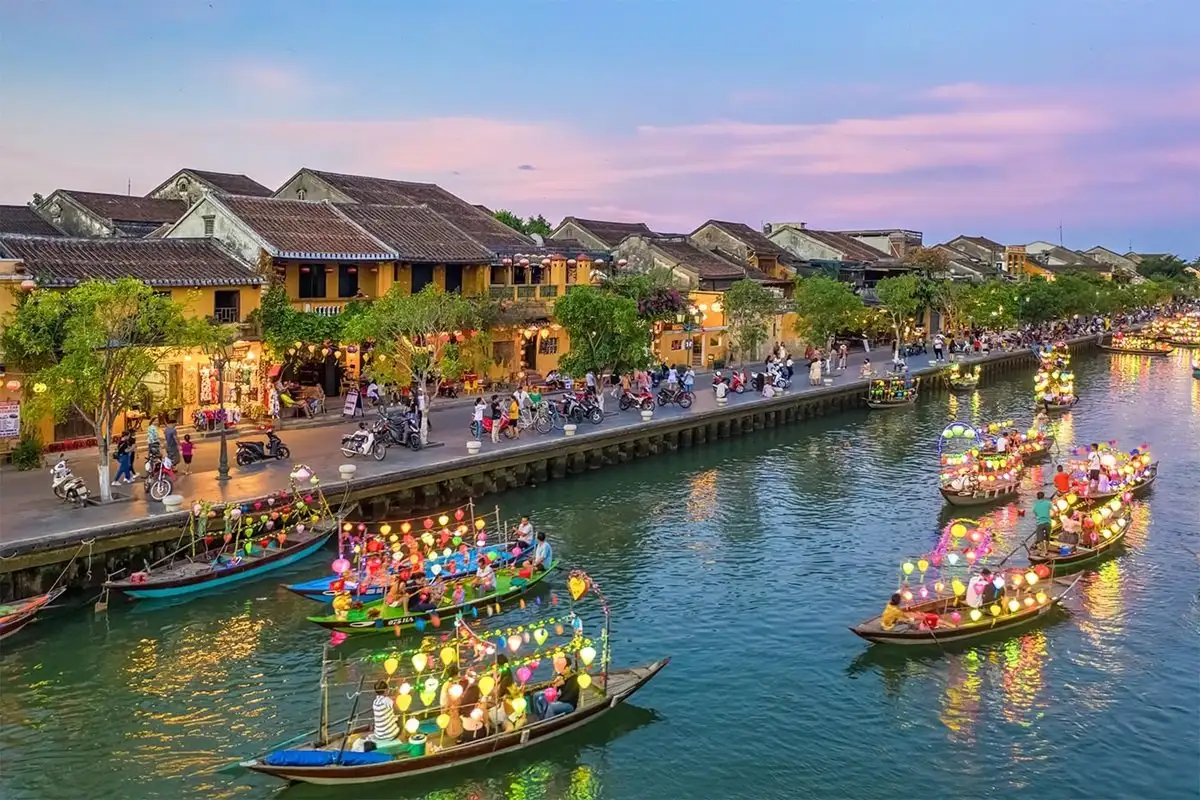
In Hoi An, the cultural legacy of the Hoa people is not just a thing of the past—it’s still alive today. Walking through the streets, visitors can see the traditional clan houses with their red and gold decorations, curved roofs, and intricate designs of dragons and phoenixes. These are clear reminders of the Hoa people’s influence on the town during its golden age.
Even today, as you wander through Hoi An, it’s easy to encounter the traces of Hoa culture. Whether it’s the sounds of market vendors speaking in Chinese, the taste of wonton noodles, or the vibrant lantern procession during the full moon festival, the influence of the Hoa people remains strong.
The mark of the Hoa People in Hoi An – A blend of heritage in the ancient town
Among the communities that once lived and traded in ancient Hoi An, the Hoa people are one of the groups that have left the most notable marks. They came from coastal provinces of China and decided to stay, forming guilds, building houses, opening shops, and becoming an integral part of the ancient town.
The presence of the Hoa people in Hoi An began around the 16th – 17th centuries when this town was one of the busiest international trading ports in Southeast Asia. At that time, Hoi An (also known as Faifo) attracted merchant ships from all over: Japan, China, Portugal, the Netherlands, and more. Among them, the Hoa people arrived as traders, bringing goods such as silk, ceramics, tea, and traditional medicine to exchange with the Vietnamese and foreign merchants.
Thanks to its advantageous geographic location, mild climate, and the Nguyen dynasty’s open trade policies, many Chinese traders not only passed through but chose to settle down long-term in this land. Gradually, they formed separate communities, often divided by their hometowns, such as Fujian guide (Phúc Kiến), Guangdong guild (Quảng Đông), Chaozhou guild (Triều Châu), Hainan guild (Hải Nam).
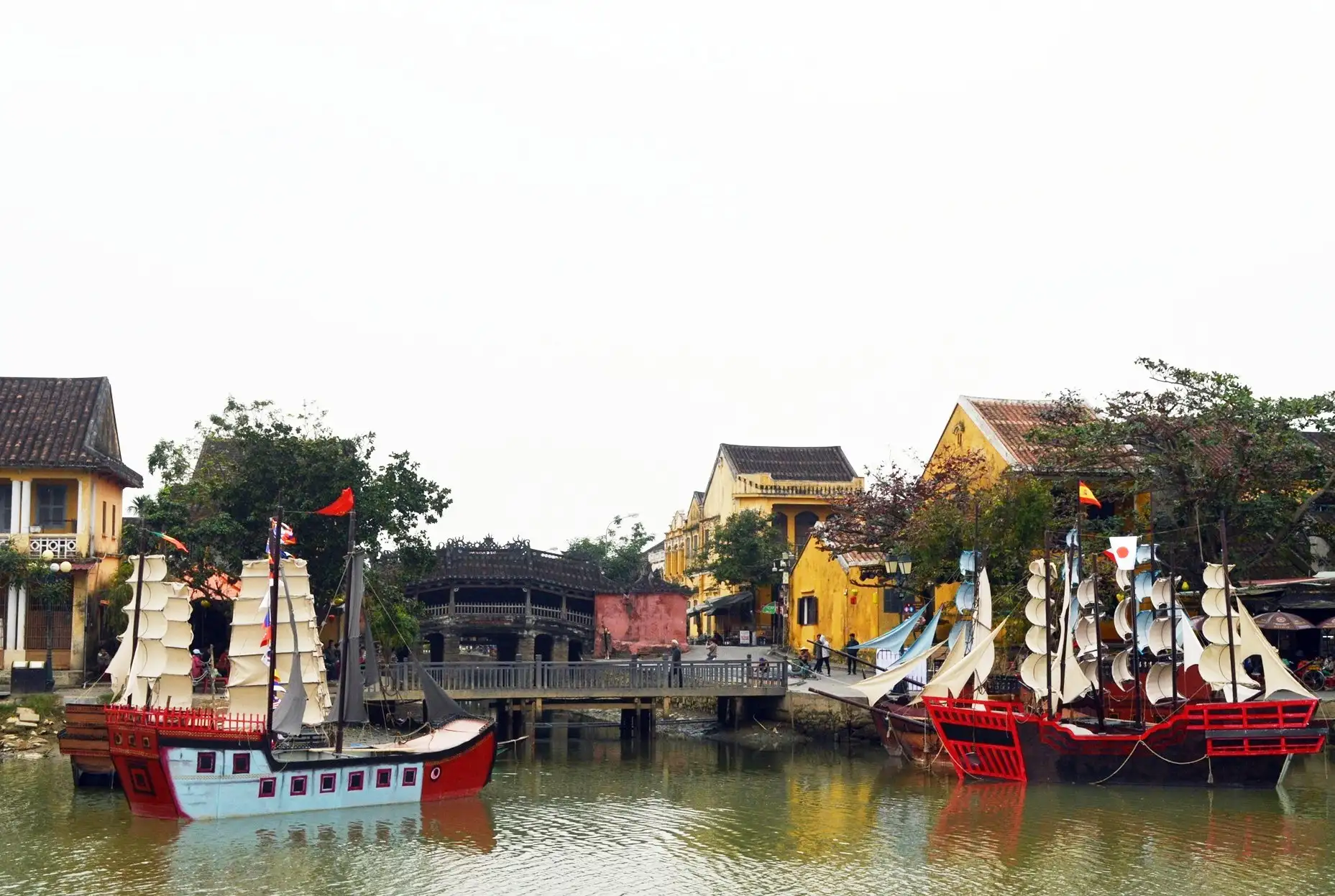
To preserve their culture and strengthen community bonds, the Hoa people in Hoi An built guild halls, which served both as places for religious activities and centers for mutual support in business and daily life. Each guild had its own hall, with architecture reflecting its regional characteristics, and they worshipped guardian deities such as Tian Hou (Goddess of the Sea), Guan Gong (symbol of loyalty and righteousness), and Phuc Đức Chính Thần (God of Prosperity).
Additionally, the Hoa people quickly integrated with the local community. They learned Vietnamese, married local people, participated in social activities, and played a significant role in the economic development of Hoi An. Many opened shops, produced handicrafts, traditional medicine, and silk, contributing to the vibrancy of the trading port at that time.
Despite historical upheavals and changes in circumstances, the Hoa community in Hoi An has preserved unique aspects of their customs, beliefs, and architecture. Although they no longer live in concentrated communities as before, the cultural heritage they left behind remains an inseparable part of the ancient town’s identity today.
Exploring the unique destinations of the Hoa People in Hoi An
Hoi An is not only a UNESCO World Heritage Site but also a place that preserves the distinctive marks of the Hoa community through various periods. If you want to understand more about the history and culture of this community, here are some key destinations to visit.
Phuc Kien Assembly Hall
Located at 46 Tran Phu, Phuc Kien Assembly Hall is one of the oldest and most famous assembly halls of the Hoa people in Hoi An. Built in 1697, this assembly hall serves not only as a place of worship but also as a community gathering space for the Hoa people of Fujian origin.
The architecture of the assembly hall reflects traditional Chinese culture, with curved tiled roofs, intricately carved wooden pillars, and a spacious courtyard that creates a quiet and sacred atmosphere. The hall is dedicated to the worship of Thien Hau, the goddess who protects sailors and merchants. The calligraphy and couplets on the walls are also traditional art forms, paying homage to ancestors and preserving cultural values.

Visitors to Phuc Kien Assembly Hall will have the opportunity to admire its distinctive architecture and experience the solemn, peaceful atmosphere. If you enjoy serenity, dignity, and exquisite architectural details, don’t forget to visit this hall to feel the cultural fusion between Chinese and Vietnamese traditions.
Quang Dong Assembly Hall
The Hoa people from Guangdong in Hoi An built the Quang Dong Assembly Hall in the late 19th century. This structure not only serves as a religious site but also deeply reflects the cultural identity and beliefs of this community. Located at 176 Tran Phu, the assembly hall is a convergence of traditional values and a community space, welcoming visitors with unique architecture and rich historical stories.
This building is especially notable for its blend of Chinese and Vietnamese architectural elements, such as dragon and phoenix motifs carved on wooden pillars, lacquer paintings depicting ancient legends, and a solemn worship space. Quan Cong, the god of justice and protector of the community, is worshipped here, highlighting the religious practices of the Hoa people in Hoi An.
Ong Pagoda
Ong Pagoda, also known as Mieu Quan Cong, located at 24 Tran Phu, is one of the most special and oldest pagodas of the Hoa people in Hoi An. Built in 1653, the pagoda worships Quan Cong, a famous deity in Chinese culture symbolizing loyalty, justice, and protection. This is an unmissable destination for those who wish to understand the religious life of the Hoa community in the ancient town.
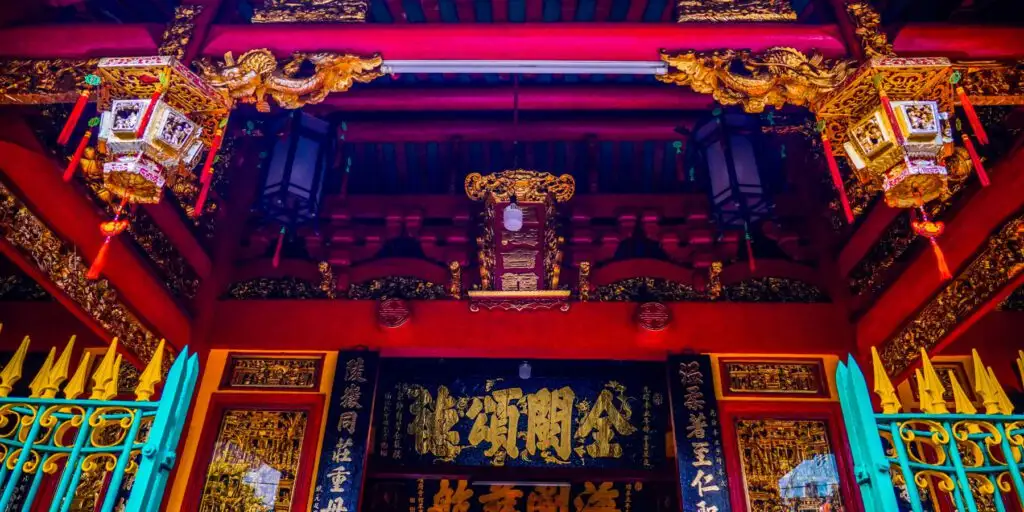
The architecture of Ong Pagoda strongly reflects Chinese cultural influences, with sharp decorative motifs, from the characteristic curved roof to finely carved wooden pillars. Inside the pagoda, visitors will find paintings and calligraphy that express respect for Quan Công and the cultural values preserved by the Hoa people over generations. Quan Công is not only a protector deity but also a symbol of steadfastness and loyalty, worshipped by the Hoa people in the hope of finding peace in their work and life.
Hoi An culture museum
The Hoi An Culture Museum, located at 10B Tran Hung Dao, is a place where valuable artifacts reflecting the formation and development of the ancient town of Hoi An through various periods are preserved and displayed. This museum not only introduces the history of Hoi An’s development but also highlights the cultural confluence among various ethnic groups, including the Hoa people. In particular, the museum’s exhibits showcase the influence of the Hoa people in terms of architecture, household items, and labor tools.
In addition to the artifacts, the museum also features models that recreate the daily life of Hoi An’s residents in the past, helping visitors easily visualize the town’s historical formation and development.
Hai Nam Assembly Hall
Located at 10 Tran Phu, Hai Nam Assembly Hall is one of the prominent assembly halls of the Hoa people of Hainan origin in Hoi An. Built in 1750, this assembly hall worships protective deities of the Hainan Hoa community, particularly Thien Hau, the goddess believed to protect sailors and merchants. The architecture of the hall carries distinct Chinese cultural influences, with intricate wood carvings, curved tiled roofs, and a solemn worship space.

Visitors to Hai Nam Assembly Hall can admire the unique elements of the Hoa people’s culture and beliefs, especially those specific to the Hainan Hoa community. Moreover, the quiet and peaceful atmosphere of the hall makes it an interesting stop for visitors touring the ancient town of Hoi An.
Festivals of the Hoa people in Hoi An
Beyond their distinctive architectural landmarks, the Hoa community in Hoi An continues to preserve and celebrate many traditional festivals deeply rooted in Eastern culture. These events are not only occasions for honoring ancestors and praying for peace, but have also become unique cultural highlights that attract both local and international visitors.
Yuanxiao Festival
Held on the 15th day of the first lunar month, the Yuanxiao Festival (also known as the Lantern Festival) is one of the most important events for the Hoa people. On this day, ancestral temples and assembly halls such as Fujian, Cantonese, and Chaozhou host solemn ceremonies to pray for peace, prosperity, and good fortune.
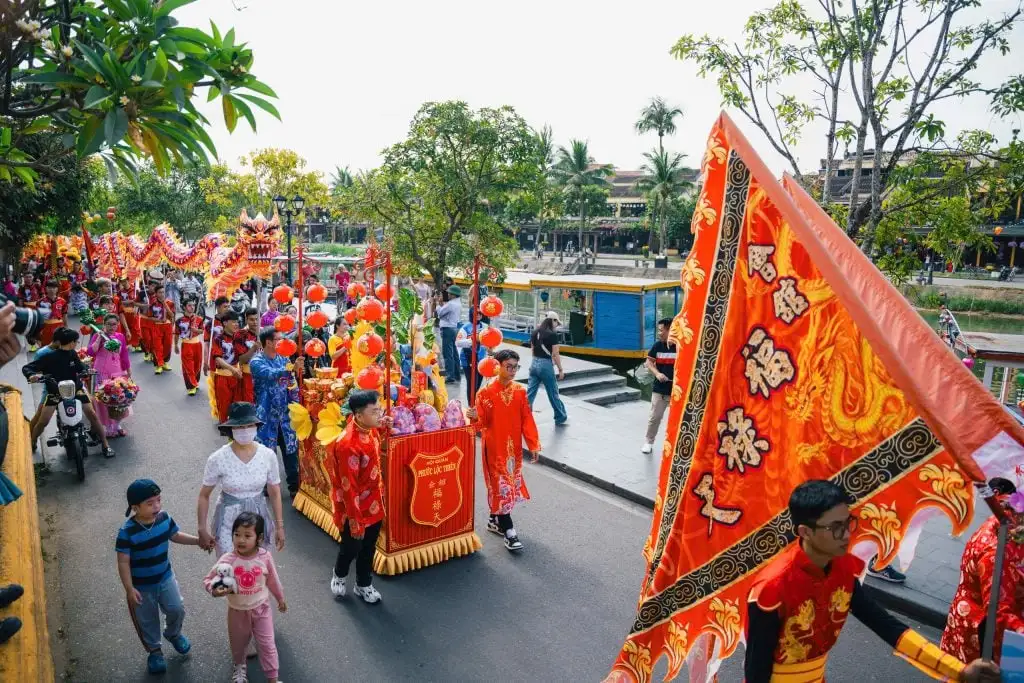
One of the most iconic features of the festival is the lantern parade, where hundreds of colorful lanterns light up the ancient streets. Locals – both Vietnamese and Hoa – join in the procession, creating a vibrant atmosphere that is both nostalgic and lively. For travelers, it’s a perfect opportunity to witness the unique fusion of cultures and feel the spirit of the Hoa people glowing in every corner of Hoi An.
Vu Lan Festival
Although Vu Lan is a major Buddhist holiday, it also holds deep cultural meaning for the Hoa community. In the seventh lunar month, they organize offering rituals at assembly halls and Quan Cong temples to honor ancestors and wandering souls. Families prepare respectful offerings, hang red lanterns at their doorsteps, and light incense to express filial piety and remembrance.
Mid-Autumn Festival
Known as the Festival of Reunion, the Mid-Autumn Festival is celebrated with great enthusiasm by the Hoa in Hoi An. In addition to offering mooncakes and fruit trays under the full moon, Hoa assembly halls organize lion dances, lantern processions, and folk games to bring joy to children.
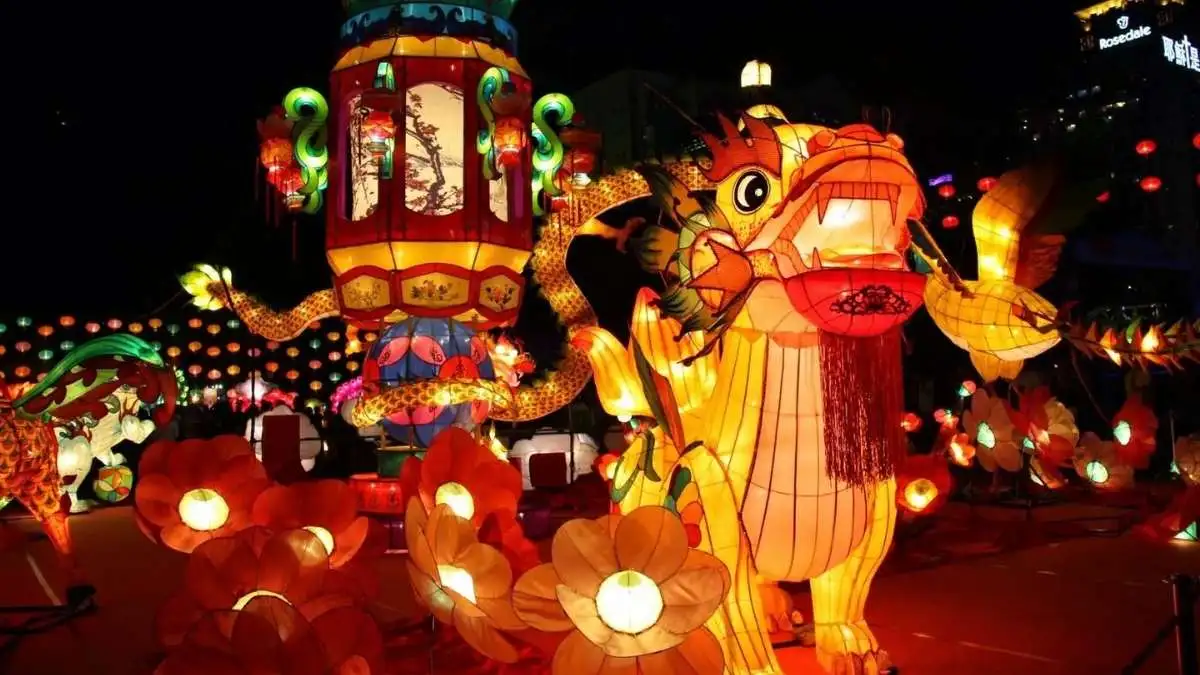
During this time, Hoi An’s ancient streets glow with thousands of lit lanterns. The rhythmic sound of lion drums and joyful laughter fill the air, creating a vibrant festival atmosphere that draws visitors from all over.
Worship Days of Guan Yu and Mazu
The Hoa community in Hoi An also celebrates the spiritual birthdays of Guan Yu and Mazu – two deities deeply revered in their folk beliefs. Guan Yu’s day (24th of the sixth lunar month) and Mazu’s day (23rd of the third lunar month) are occasions to offer respect and pray for protection, prosperity, and harmony.
These ceremonies are held with traditional rituals such as incense offerings, reading of prayers, and performances of traditional arts. For tourists, these events provide insight into the spiritual life and rich cultural heritage that the Hoa community continues to nurture in Hoi An.
Hoa people’s cuisine
Besides architecture and festivals, cuisine is one of the most vibrant ways to experience the Chinese community’s presence in Hoi An. The dishes introduced by the Chinese are not only rich in flavor but also showcase a fascinating blend of traditional Chinese culinary art and local Vietnamese ingredients. Though the Chinese community makes up only a small portion of the population, their influence on the local food culture has been profound and lasting.
Read more: Food in Hoi An: A Journey through tradition and flavor
Cao Lau
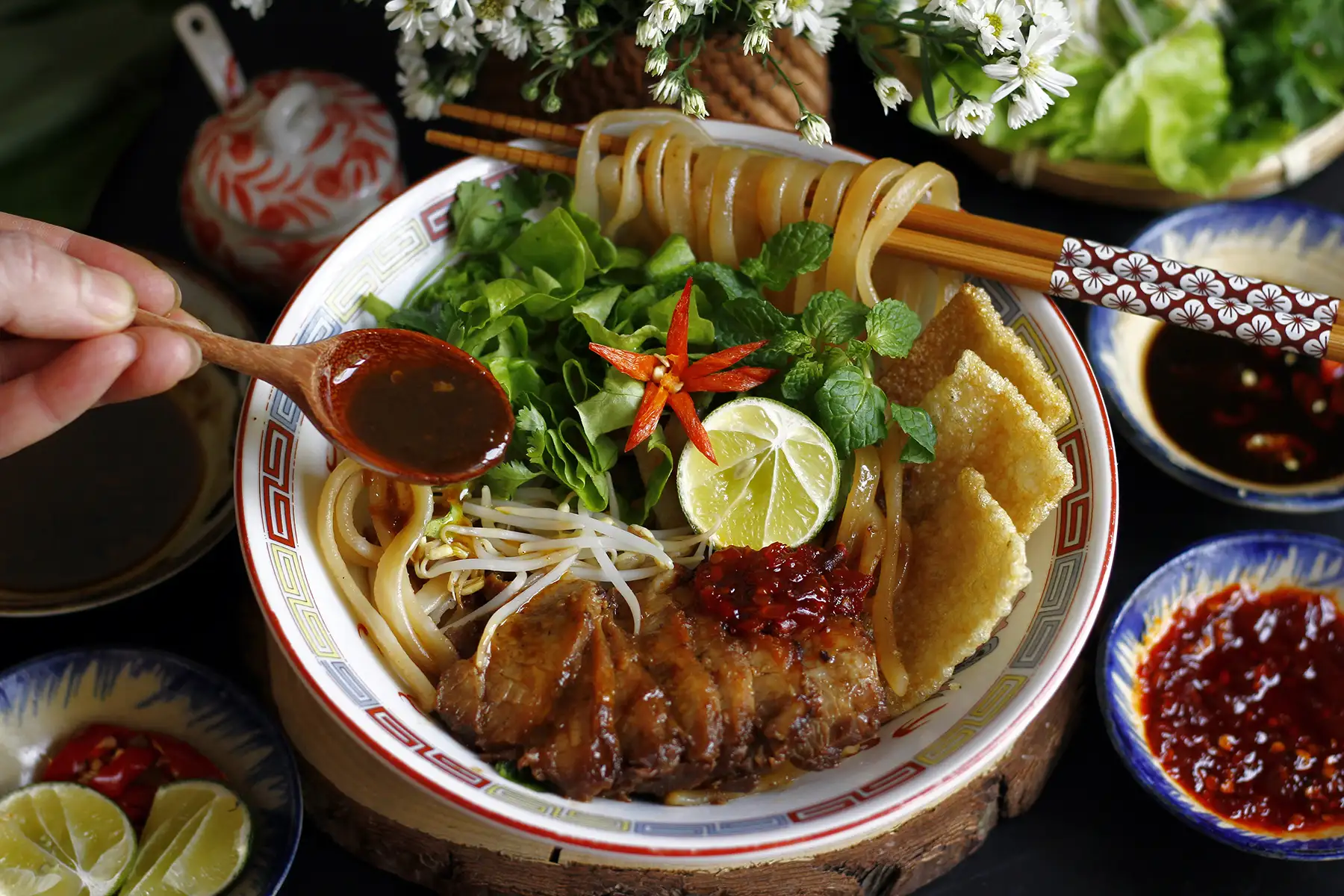
Cao Lau is often seen as a culinary emblem of Hoi An, and many believe it was inspired by the food culture of Chinese settlers, especially those from Fujian. The thick noodles, prepared using water from ancient wells and lye ash, are chewy and distinct. They’re served with slices of char siu-style pork, crunchy rice crackers, and a generous portion of fresh herbs.
Wonton
Wonton, known locally as “hoanh thanh,” is one of the most recognizable Chinese dishes in Hoi An. These dumplings come in various forms: deep-fried until golden and crispy, gently poached in broth, or steamed and served with a savory sauce. The filling usually includes seasoned ground pork or shrimp, and each bite offers a satisfying contrast between the soft wrapper and flavorful center.
Braised duck noodles

This dish is a hidden gem of Hoi An’s Chinese-influenced cuisine. The duck is braised slowly in a broth enriched with traditional herbs and spices, giving the meat a tender, melt-in-the-mouth quality. Served over thin egg noodles and often accompanied by a side of pickled vegetables, braised duck noodles reflect the medicinal approach to food in Chinese philosophy – hearty, warming, and restorative.
Teochew-style congee
Teochew congee may look simple at first glance, but it carries layers of flavor and cultural significance. Made with pork offal, sliced century eggs, shallot oil, and crushed roasted peanuts, this rice porridge is a favorite among older generations of Chinese-Vietnamese families. Its soft texture and comforting warmth make it a staple dish for breakfast or late-night meals, embodying the homey essence of southern Chinese comfort food.
Chinese sweet soups
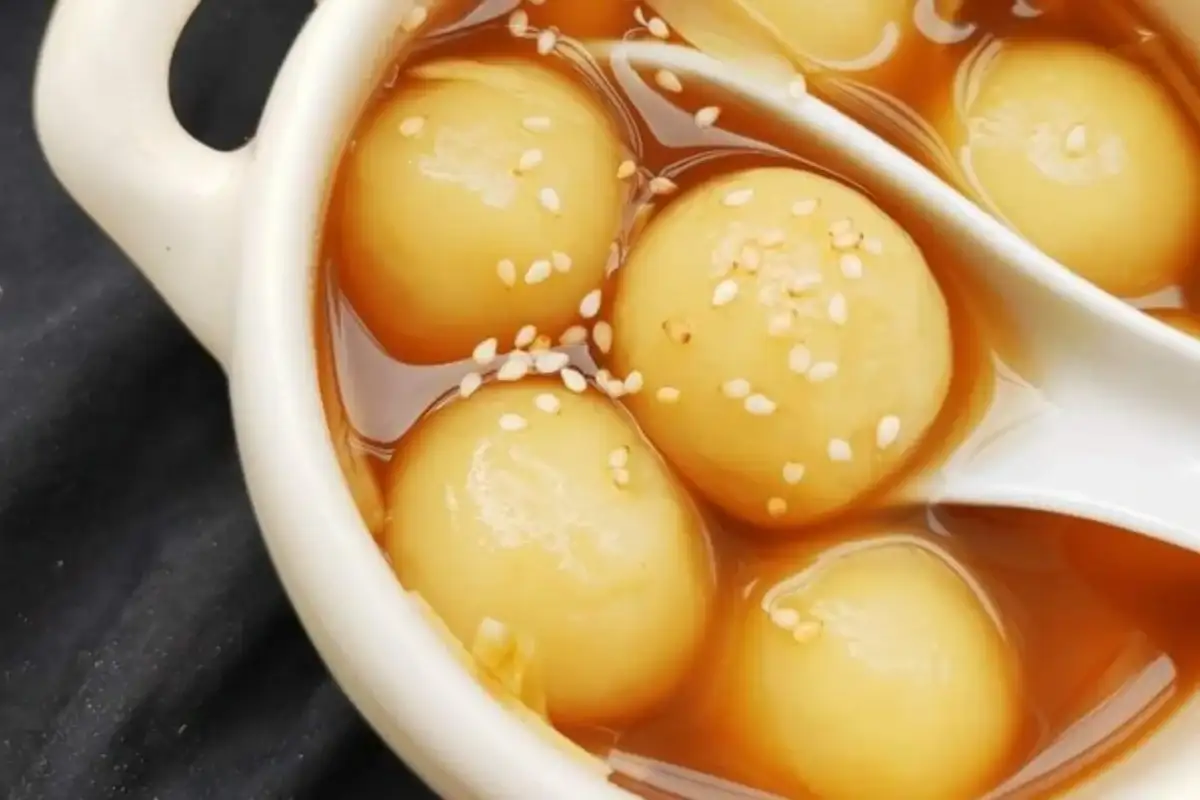
Sweet soups, or “chè Hoa,” offer a soothing end to a Chinese meal in Hoi An. Popular choices include black sesame soup, smooth and slightly nutty; tofu pudding in ginger syrup, warm and silky; and glutinous rice balls filled with black sesame or peanut paste, floating in sweet ginger broth. These desserts are not only delicious but also align with the Chinese belief in food as a source of balance and health, making them a perfect way to conclude a cultural and culinary journey.
Read more: Exploring the best Vietnamese sweet soups
Exploring the rich heritage of Hoa people in Vietnam and especially Hoi An is a memorable experience for any culture-loving traveler. To make your trip even more complete, consider staying at Bliss Hoi An Beach Resort & Wellness. Located right by the peaceful Binh Minh beach, Bliss offers spacious ocean-view rooms, a relaxing spa, a beautiful infinity pool, and convenient shuttle service to the ancient town. It’s the perfect balance of comfort and culture, ideal for unwinding after a full day of discovery in Hoi An.








